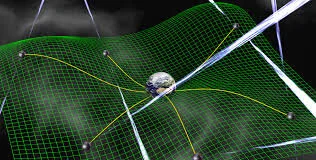After disappearing for a week, this week I cover three papers discussing why reducing the sound horizon is necessary but not sufficient to solve the Hubble tension, how to probe gravitational waves using astrometry, and whether unparticles might have something to do with dark energy. As of this week I’ve also decided to start including plots from the respective papers, where necessary, in my summaries, as a good plot is worth a thousand words. Enjoy!
Top arXiv papers from Week 39, 2020
Top arXiv papers from Week 38, 2020
This week I cover a proposal to confirm the possible Dirac nature of neutrinos exploiting a subtle correlation between cosmological and terrestrial measurements, how to determine the sound horizon and H0 from BAO independently of the details of recombination, and a possible interpretation of the recent detection of the stochastic gravitational wave background at nHz frequencies by NANOGrav as being due to cosmic strings. Enjoy and have a nice weekend!
Top arXiv papers from Week 37, 2020
After a much needed 3-week break in Spain and 2 weeks “at” the Cosmology from Home conference (great talks, great format, great work by the organizers, 5+ stars from my side), the weekly arXiv synopses return! This week I cover the first constraints on small-scale non-Gaussianity from the UV galaxy luminosity function, astrophysical signatures of black holes carrying magnetic charge, and the HMCODE-2020 code for modelling the non-linear matter power spectrum. Enjoy!
Top arXiv papers from Week 31, 2020
End-of-the-week synopses looking at the possibility of directly detecting dark energy fluctuations using anisotropies in gravitational wave luminosity distances, constraints on baryonic effects from the DES Y1 data, and revisiting constraints on the CMB temperature and whether the latter might have some bearings on the H0 tension. A heads-up that this will be the last entry for the next 5 weeks, as I’m going on holiday. Enjoy, and see you again here in mid-September!
Top arXiv papers from Week 30, 2020
Top arXiv papers from Week 29, 2020
Top arXiv papers from Week 27, 2020
Top arXiv papers from Week 26, 2020
End of the week wrap-up, which discusses how early dark energy runs into trouble when confronted against large-scale structure full-shape galaxy power spectrum data (with a social injustice metaphor related to bad practices when trying to solve the H0 tension), the puzzling origin of GW190814, and a good ambulance chasing paper which turns XENON1T into a machine to set precise constraints on non-standard neutrino interactions.
Top arXiv papers from Week 25, 2020
This week is a bit special, and I have been debating with myself for some time whether I should have talked about the XENON electronic recoil excess we all have heard about, reported in 2006.09721 (this inner debate is one of the reasons behind my delay). Ordinarily I would have done so, but this time I opted for no, simply because there is much better coverage on the XENON result out there than anything I could possibly produce (needless to say many other popular science articles on the XENON results are instead pure junk). Natalie Wolchover is probably one of my favorite scientific journalists (by far the best among the ones I have interacted with), so for those interested in an excellent coverage of the XENON result, I recommend her piece on Quanta Magazine. Having said that, I’ve devoted this week’s entry to a new measurement of H0 from the Baryonic Tully-Fisher relation, a new neutrino mass forecast for cosmology taking into account a very subtle effect on the galaxy bias, and a study of the shadows of rotating regular black holes.










